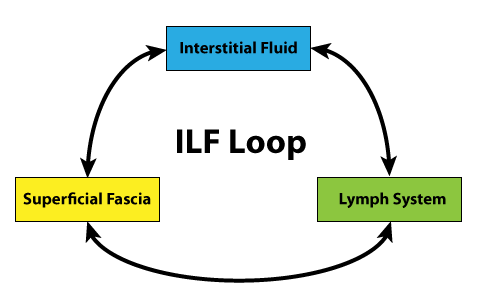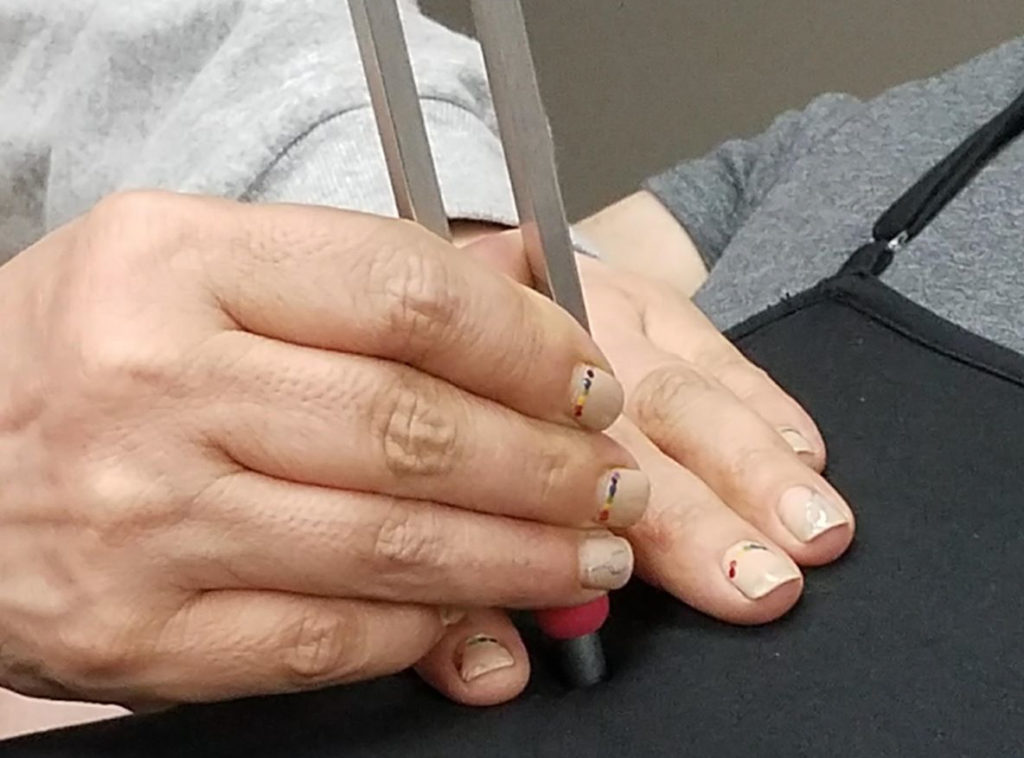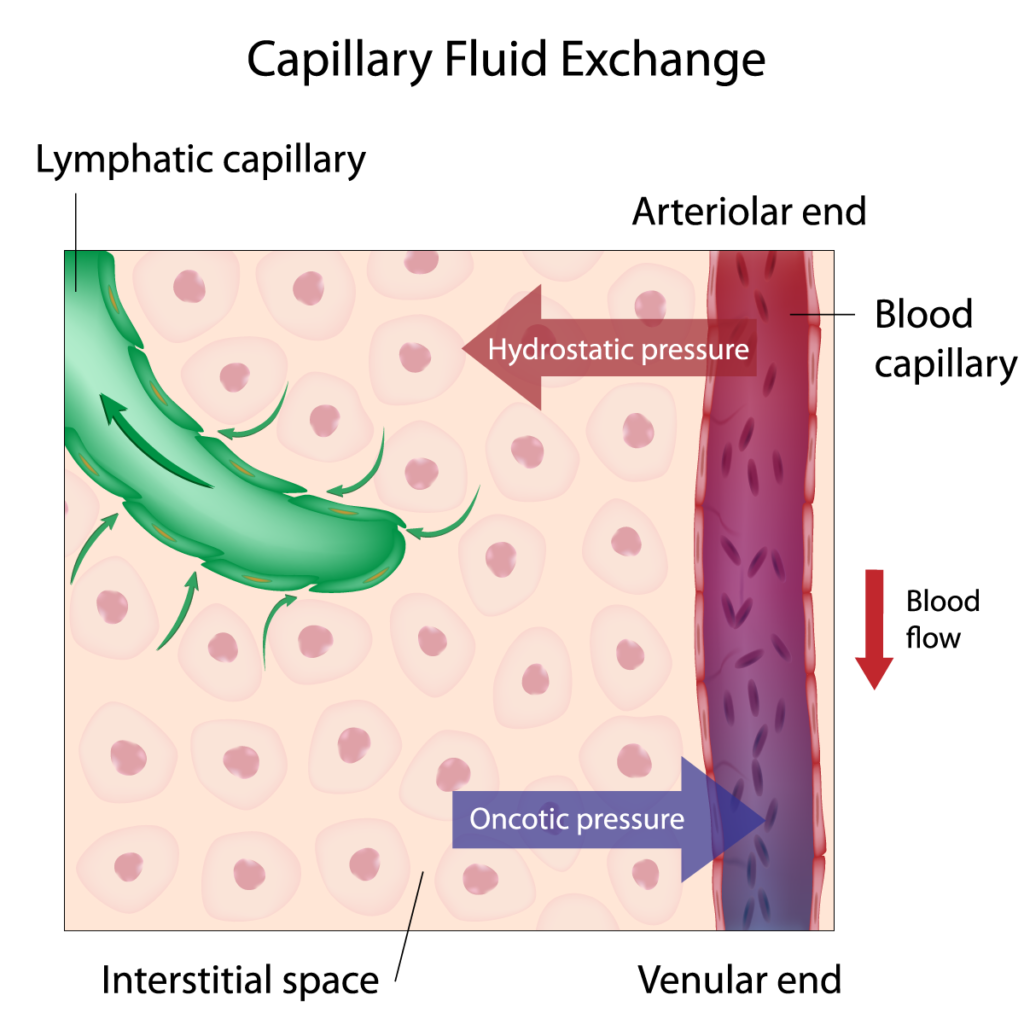We received a question in our NEHC Academy Facebook Group about working on clients with Complex Regional Pain Syndrome (CRPS) especially when the client has a severe sensitivity to pain.
I have some personal theories when it comes to a diagnosis of CRPS. Based on our experience with clients diagnosed with this ailment, we believe the problem is similar to those suffering from fibromyalgia. Specifically, I see chronic, full-body pain as a fluid build up issue that causes the pain receptors to be in a constant firing condition as the fluid pressure presses against the nociceptor peripheral nerve endings.
The Usual Suspects in Chronic Pain:
It’s rather interesting how our interstitial fluid space is never considered a “usual suspect” when it comes to pain even though the description of the condition has all of the key words to tell the story. For example, the National Institute of Neurological Disorders and Stroke states this about CRPS: “The key symptom is prolonged severe pain that may be constant. It has been described as “burning,” “pins and needles” sensation, or as if someone were squeezing the affected limb.” They go on to say that people suffering from CRPS “experience changes in skin temperature, skin color, or swelling of the affected limb” which is “due to abnormal microcirculation caused by damage to the nerves controlling blood flow and temperature.”

I’m not sure why it is so difficult to see that the problem is fluid build up and compartmentalization of those fluids that causes all of the vessels and nerves running through the “region” to compress and start a downward spiral in the ILF Loop (Interstitial, Lymphatic, Fascial) where the body can no longer remove the fluids of the interstitial space properly. A better term might be “regional edema” since this is exactly what is happening. Too much interstitial fluid in a compartmentalized space.
Fluid Followed By Fascia Approach:
Our Vibrational Therapists, use a sensing (palpation) hand right on the skin and press down to feel the fluids. We move the fluids away from the compartmentalized area in our Fluid First Approach (FFA) so that the dispersed fluids can be handled properly by the next compartment that is not currently over-pressurized with fluids. We have an edema protocol with CRPS to move fluids and vibrate the fascia to loosen it up and prevent un-neccesary compartmentalization.
This type of condition is exactly why we created the Vibrational Fascia Release Technique (TM). This is a Fluid Followed by Fascia issue. Where the interstitial fluids in the extracellular matrix prevents us from reaching the fascial adhesions with tuning fork vibrations.

For some clients with CRPS or fibromyalgia and other full-body chronic pain symptoms, using tuning forks directly on the body can be too painful. In these cases, we would wrap the area we need to work on with plastic to compress a large area of tissue. It is my theory that the brain cannot properly identify where the pain is coming from since all of an area is compressed. Not only is this compression a form of large-area pain blockage, this is likely the same pain relief mechanism involved in compression socks or bandages.
Fascial Adhesions Cause Fluid Compartmentalization:
Internal scars or fascial adhesions are also a likely culprit of regional pain issues. This concept of fascia release is mostly about untangling the collagen fibers or getting them to break up with a particular technique. Our technique is vibration from a weighted tuning fork which we are able to experience a rapid change to the fascia adhesion depending on the conditions around the tissue and the proper pressure and placement of the tuning fork.
In order to find the fascial adhesions, we use the hand sensing or palpation method to locate the fascial adhesions below the skin because our hands are better at giving us many different qualitative properties of the fascial adhesions such as firmness (density), depth, fluid content, and boundaries.

Other sensing methods like dowsing or internal sensing (hollow bone) gives us only one dimension of feedback in most cases. This is why we teach the hand sensing method in our VFRT(TM) training. It’s critical to determining if our placement and pressure is adequate to release the adhesion. We also keep the sensing hand on the same spot during the placement to feel for rapid changes to the fascia as it breaks up or the interstitial fluids are released from the immediate area.
Strawberries Through a Straw Effect:
We have termed this rapid release of fluids the “strawberries through a straw” effect to describe the feeling of fluids moving rapidly underneath our sensing fingers. I have not personally experienced the same resolution of fascial scars with other methods such as dowsing or red light therapy. Although, we have conducted our own study on red light therapy, and found in our research that there is an aspect of pain relief due to the heat of the infra-red light which we know will thin out the fascial fluids and relieve the pressure on the nerve endings. But we have not seen or felt a change to the fascia adhesions with red light therapy.
When we are dealing with fascia-based pain, most methods of pain relief focus on compressing the fascial layers or pulling them apart like cupping. Tuning fork vibration focuses on thinning the fascial fluids and resolving the collagen fibers creating the fascial adhesions. With these things resolved, the fluid pressure should subside along with any comparmentalization in the body regions involved in the CRPS.
Using Heat to Loosen Fluids:

We have also discovered with our edema clients that putting a hot water bottle on the wrapped area prior to using the tuning forks will speed up the process and cause a lot less pain because the fascial fluids (glycosaminoglycans and proteoglycans) have thinned out with the heat. Then you can go to work with the tuning forks.
There are certain “conditions” where a Vibrational Therapist would benefit from heating the fascial fluids prior to releasing fascial adhesions depends on the thickness and volume of the interstitial fluids along with the condition of the fascia in that part of the body. If we were to put it on a spectrum, the end of the scale with the “absolutely heat the fluids” would be our edema client who has extreme fluid pressure in the lower legs.
There is so much compression in those compartmentalized parts of his legs that it is extremely painful for him when we start to move fluids through more compressed tissue. You can compare this concept to drinking a thick shake through one of those plastic stir sticks.
Fascia-based Vascular System:
On the other end of the spectrum is the average person with some fluid build up and is active but doesn’t appear to have a lot of fascial adhesions preventing a good movement of fluids from one compartment to another. Basically, if the fascia adhesions are causing the compartmentalization and pressure build up, then it would make sense to lower the thickness of the fascial fluids first. After all, the fascial fluids (glycosaminoglycans and proteoglycans) are partially responsible for creating the “vessels” for interstitial fluids to move especially during low activity where the person is not moving.

Just like the lymphatic system, the extracellular matrix must depend on the fibroblasts to create the vessels within this space to control the flow of interstitial fluids since there is no pump like the heart for the cardiovasular system. When you apply heat or vibration to a thixotropic fluid, it changes from a thick consistency to a watery consistency. We have seen many applications of both heat and vibration with various products like heating/vibrating pads. What was always missing from this process of pain relief was the pushing or moving of fluids once they were thinned out.
Heat it, shake it, then move it. Let the lymphatic vessels in the next compartment share the load to remove the un-needed interstitial fluid.
If you would like to learn more about our Vibrational Fascia Release Technique(TM) and working on the body with tuning forks for pain relief, check out our Courses and Books pages for training material. You can also join our NEHC Academy Facebook Group for in-depth discussions on tuning forks.


